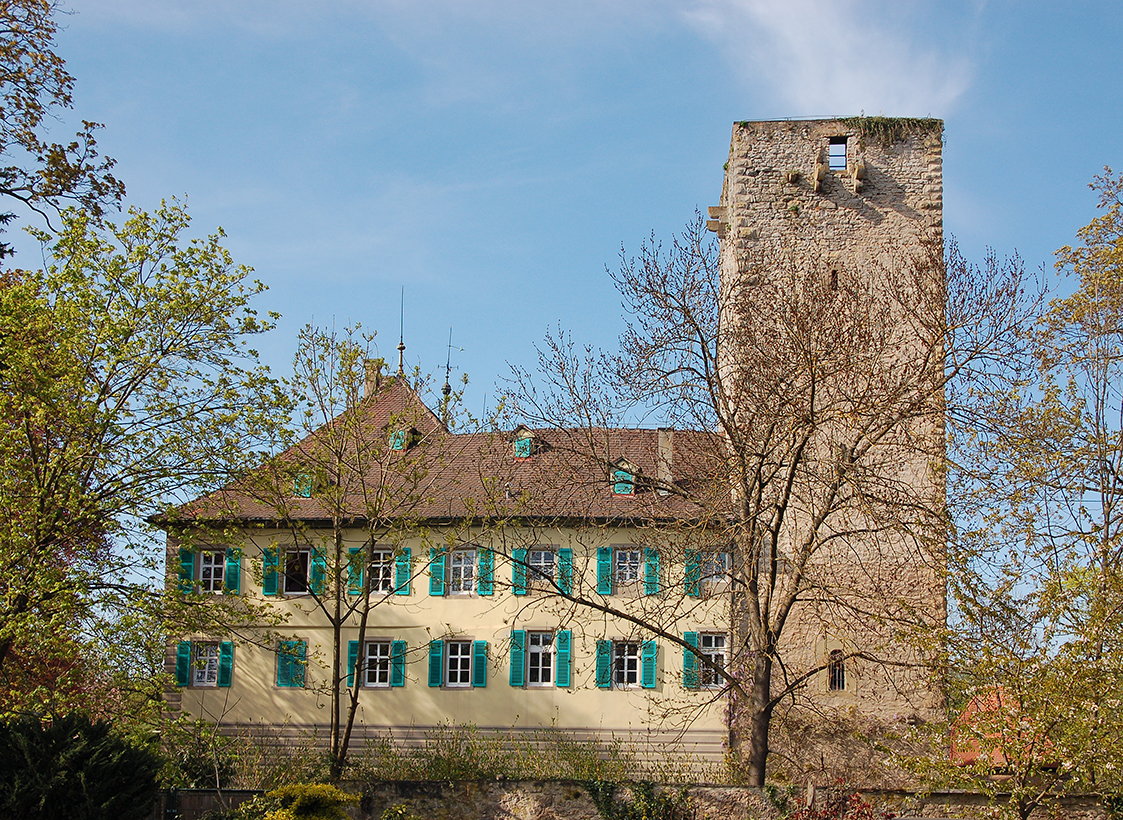|
Glems
The river Glems is a right tributary of the river Enz in Baden-Württemberg, Germany and around long. The spring is located in the south-west of Stuttgart. On the way to the confluence into the Enz next to Unterriexingen (a quarter of Markgröningen) it passes the districts of Böblingen and Ludwigsburg. The river Glems gives its name to a wooded mountain range called Glemswald in the ''Böblingen district'' of Stuttgart Region. Since 1575, water from the upper Glems is collected in the Pfaffensee reservoir and redirected towards Stuttgart through a tunnel. First it was discharged in the Nesenbach, since 1874 into municipal waterworks Water supply is the provision of water by public utilities, commercial organisations, community endeavors or by individuals, usually via a system of pumps and pipes. Public water supply systems are crucial to properly functioning societies. The .... References {{Authority control Rivers of Baden-Württemberg Rivers of Germany ... [...More Info...] [...Related Items...] OR: [Wikipedia] [Google] [Baidu] |
Unterriexingen
Unterriexingen is a village in the district of Ludwigsburg, Baden-Württemberg, Germany. By 1973 it was incorporated to the town of Markgröningen. Geography Geology Unterriexingen lies on a by the Glems split terrace of the Enz, which rises to the south and was covered by a glacial Loess layer. Location and route network The village lies on the northern edge of the ''Strohgäu'' about four kilometers north of Markgröningen. Through Unterriexingen flows the Glems. About 400 meters below the town the Glems opens in the Enz. Neighbouring Around Unterriexingen are the settlements of Großsachsenheim, Untermberg, Markgröningen, Talhausen, Aichholzhof, Pulverdingen, Enzweihingen, Leinfelder Hof and Oberriexingen (from the north clockwise). Sons and daughters of the town * August Ludwig Reyscher (born 1802 in the rectory; died in Cannstatt 1880), lawyer, legal scholars and politician (Landtag and Reichstag), '' 'the only honorary citizen' '' of Unterriexingen (appoi ... [...More Info...] [...Related Items...] OR: [Wikipedia] [Google] [Baidu] |
Markgröningen
Markgröningen is a town in the district (Kreis) of Ludwigsburg, Baden-Württemberg, Germany. It is known for its fine historic buildings, many in the '' Fachwerk'' German architectural style, and its annual Shepherds' Run. Markgröningen is on the ''Deutsche Fachwerkstraße'' (German Timber-Frame Road). Geography Markgröningen is in the Strohgäu, on the River Glems, about 15 km northwest of Stuttgart and 10 km west of Ludwigsburg. Constituent communities In addition to Markgröningen itself, the town now includes the following formerly independent settlements: * Talhausen, a hamlet on the Glems abandoned in the 17th century and resettled around 1790 * Unterriexingen, a town at the confluence of the Glems and the Enz, incorporated into Markgröningen in 1973 * Hardthof and Schönbühlhof, founded as agricultural hamlets in the 18th century on the border with Schwieberdingen History Markgröningen (or simply “Gröningen,” as some older residents may call it ... [...More Info...] [...Related Items...] OR: [Wikipedia] [Google] [Baidu] |
Stuttgart
Stuttgart (; Swabian: ; ) is the capital and largest city of the German state of Baden-Württemberg. It is located on the Neckar river in a fertile valley known as the ''Stuttgarter Kessel'' (Stuttgart Cauldron) and lies an hour from the Swabian Jura and the Black Forest. Stuttgart has a population of 635,911, making it the sixth largest city in Germany. 2.8 million people live in the city's administrative region and 5.3 million people in its metropolitan area, making it the fourth largest metropolitan area in Germany. The city and metropolitan area are consistently ranked among the top 20 European metropolitan areas by GDP; Mercer listed Stuttgart as 21st on its 2015 list of cities by quality of living; innovation agency 2thinknow ranked the city 24th globally out of 442 cities in its Innovation Cities Index; and the Globalization and World Cities Research Network ranked the city as a Beta-status global city in their 2020 survey. Stuttgart was one of the host cit ... [...More Info...] [...Related Items...] OR: [Wikipedia] [Google] [Baidu] |
Böblingen (district)
Böblingen is a ''Landkreis'' (district) in the middle of Baden-Württemberg, Germany. Neighboring districts are (from west clockwise) Calw, Enz, Ludwigsburg, (district) Stuttgart, and the districts Esslingen, Reutlingen and Tübingen. History The district was created in 1937 as the successor of the ''Oberamt Böblingen'', which dates back to the Duchy of Württemberg, from the late 15th to the early 19th centuries. In 1973 the majority of the district Leonberg, as well as a few municipalities of the district Calw, were added to the district. A few municipalities were reassigned to the district Ludwigsburg. Geography A part of the district is located in the Black Forest, other landscapes covered are the ''Oberes Gäu'' and the ''Schönbuch Schönbuch is an almost completely wooded area south west of Stuttgart and part of the Southern German Escarpment Landscape ( German: ''südwestdeutsches Schichtstufenland''). In 1972 the centre zone of Schönbuch became the first na ... [...More Info...] [...Related Items...] OR: [Wikipedia] [Google] [Baidu] |
Nesenbach
The Nesenbach is a stream in Stuttgart, the capital of Baden-Württemberg, Germany, a tributary of the Neckar The Neckar () is a river in Germany, mainly flowing through the southwestern state of Baden-Württemberg, with a short section through Hesse. The Neckar is a major right tributary of the Rhine. Rising in the Schwarzwald-Baar-Kreis near Sc .... It has its source in the city's southwestern district of Vaihingen. After 12.8 kilometres, it discharges into the Neckar in the east of Stuttgart, opposite Bad Cannstatt. Probably due to the protecting effect of its narrow vale, the development of the large city of Stuttgart was possible despite its otherwise disadvantageous topography. From 1575 to 1874, water from the Glems river was deviated through a tunnel to the Nesenbach to ensure water supply in dry seasons. References Geography of Stuttgart Rivers of Baden-Württemberg Rivers of Germany {{BadenWürttemberg-river-stub ... [...More Info...] [...Related Items...] OR: [Wikipedia] [Google] [Baidu] |
Baden-Württemberg
Baden-Württemberg (; ), commonly shortened to BW or BaWü, is a German state () in Southwest Germany, east of the Rhine, which forms the southern part of Germany's western border with France. With more than 11.07 million inhabitants across a total area of nearly , it is the third-largest German state by both area (behind Bavaria and Lower Saxony) and population (behind North Rhine-Westphalia and Bavaria). As a federated state, Baden-Württemberg is a partly-sovereign parliamentary republic. The largest city in Baden-Württemberg is the state capital of Stuttgart, followed by Mannheim and Karlsruhe. Other major cities are Freiburg im Breisgau, Heidelberg, Heilbronn, Pforzheim, Reutlingen, Tübingen, and Ulm. What is now Baden-Württemberg was formerly the historical territories of Baden, Prussian Hohenzollern, and Württemberg. Baden-Württemberg became a state of West Germany in April 1952 by the merger of Württemberg-Baden, South Baden, and Württemberg-Hohe ... [...More Info...] [...Related Items...] OR: [Wikipedia] [Google] [Baidu] |
Germany
Germany, officially the Federal Republic of Germany (FRG),, is a country in Central Europe. It is the most populous member state of the European Union. Germany lies between the Baltic and North Sea to the north and the Alps to the south. Its 16 constituent states have a total population of over 84 million in an area of . It borders Denmark to the north, Poland and Czechia to the east, Austria and Switzerland to the south, and France, Luxembourg, Belgium, and the Netherlands to the west. The nation's capital and most populous city is Berlin and its main financial centre is Frankfurt; the largest urban area is the Ruhr. Settlement in what is now Germany began in the Lower Paleolithic, with various tribes inhabiting it from the Neolithic onward, chiefly the Celts. Various Germanic tribes have inhabited the northern parts of modern Germany since classical antiquity. A region named Germania was documented before AD 100. In 962, the Kingdom of Germany formed the ... [...More Info...] [...Related Items...] OR: [Wikipedia] [Google] [Baidu] |
Districts Of Germany
In all German states, except for the three city states, the primary administrative subdivision higher than a '' Gemeinde'' (municipality) is the (official term in all but two states) or (official term in the states of North Rhine-Westphalia and Schleswig-Holstein). Most major cities in Germany are not part of any ''Kreis'', but instead combine the functions of a municipality and a ''Kreis''; such a city is referred to as a (literally "district-free city"; official term in all but one state) or (literally "urban district"; official term in Baden-Württemberg). ''(Land-)Kreise'' stand at an intermediate level of administration between each German state (, plural ) and the municipal governments (, plural ) within it. These correspond to level-3 administrative units in the Nomenclature of Territorial Units for Statistics (NUTS 3). Previously, the similar title ( Imperial Circle) referred to groups of states in the Holy Roman Empire. The related term was used for similar ... [...More Info...] [...Related Items...] OR: [Wikipedia] [Google] [Baidu] |
Ludwigsburg (district)
Landkreis Ludwigsburg is a ''Landkreis'' (district) in the middle of Baden-Württemberg, Germany. Neighboring districts are (from north clockwise) Heilbronn, Rems-Murr-Kreis, the district-free city Stuttgart, and the districts Böblingen and Enz-Kreis. History The district dates back to the ''Oberamt Ludwigsburg'', which was created by the dukedom Württemberg in the beginning of the 19th century. After several small changes during the century, it was converted into a district in 1938. Several municipalities of the dissolved ''Oberämter'' Besigheim, Marbach and Waiblingen were added to the newly formed district. As a result of the communal reform of 1973, the district gained about half of the dissolved district Vaihingen, and some few municipalities from the districts Backnang and Leonberg. Geography The main river in the district is the Neckar, which divides the district into a big western part and a smaller eastern part. Partnerships Starting in 1990 the district has a ... [...More Info...] [...Related Items...] OR: [Wikipedia] [Google] [Baidu] |
Stuttgart Region
Stuttgart Region (Baden-Württemberg, Germany) is an urban agglomeration at the heart of the Stuttgart Metropolitan Region. It consists of the city of Stuttgart and the surrounding districts of Ludwigsburg, Esslingen, Böblingen, Rems-Murr and Göppingen (each 10–20 km from Stuttgart city center). About 2.7 million inhabitants live in that area (3,700 km2). In fact, with 708 people per square kilometre, the Stuttgart Region () is one of the most densely populated areas in Germany. Stuttgart Region is governed by a directly elected parliament. Situated at the heart of Baden-Württemberg, the ''Stuttgart Region'' is the hub of economic, scientific, and political life in Southwest Germany. The area currently has Germany's highest density of scientific, academic and research organisations, and tops the national league for patent applications. Geography From northwest to southeast the region is 90 kilometers long and from southwest to northeast 80 kilometers. Th ... [...More Info...] [...Related Items...] OR: [Wikipedia] [Google] [Baidu] |




